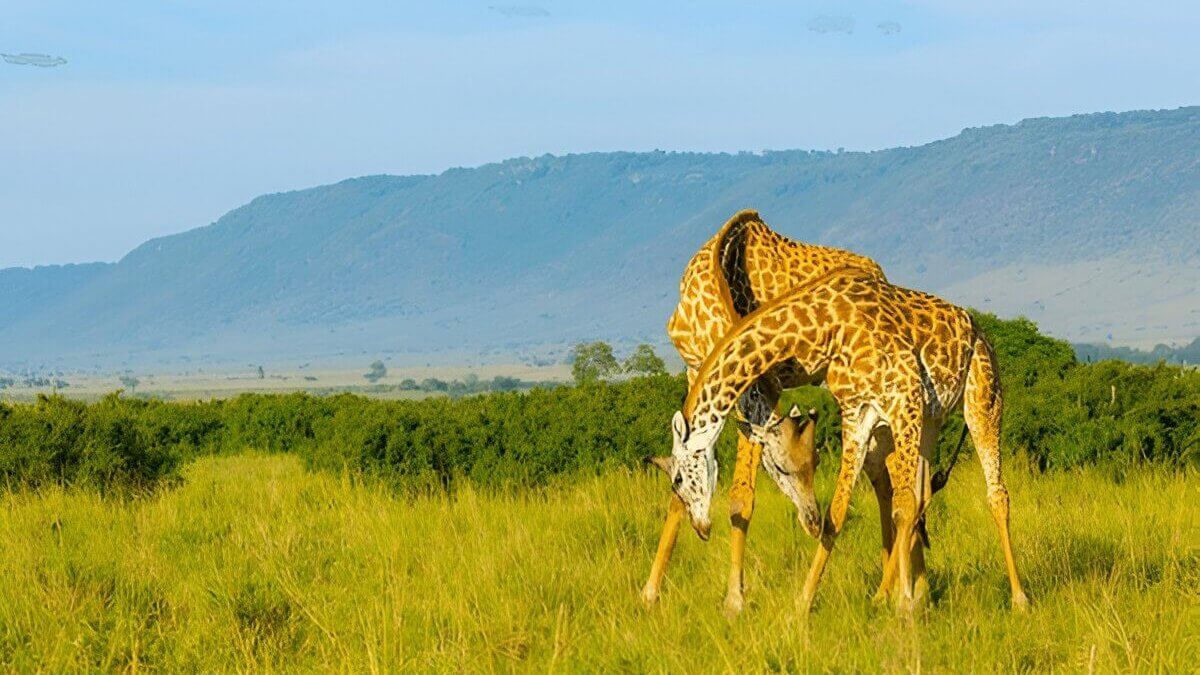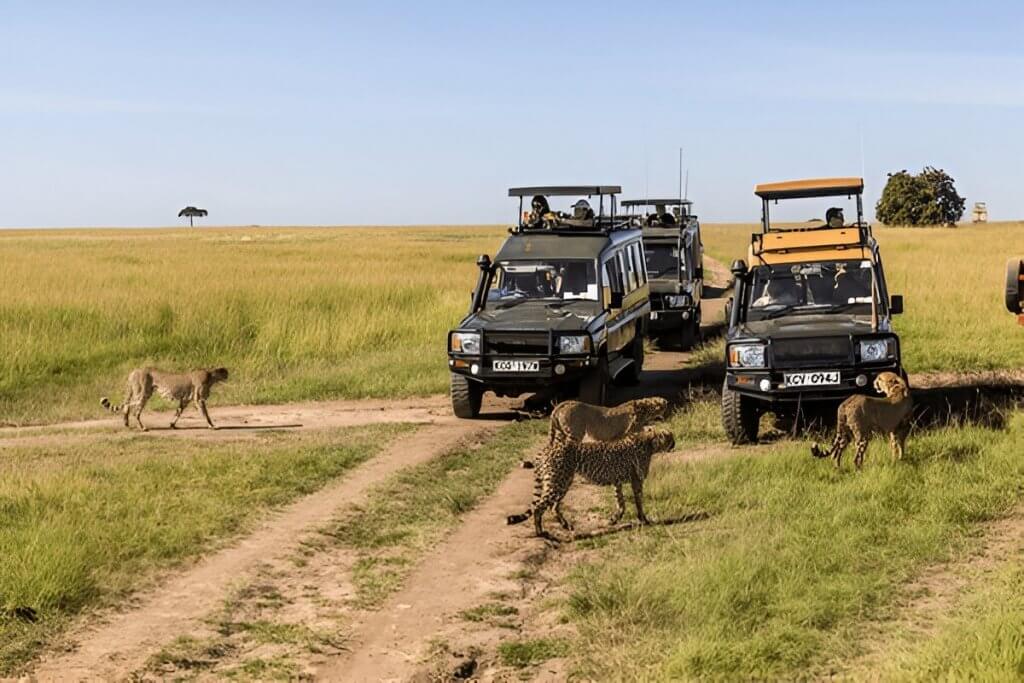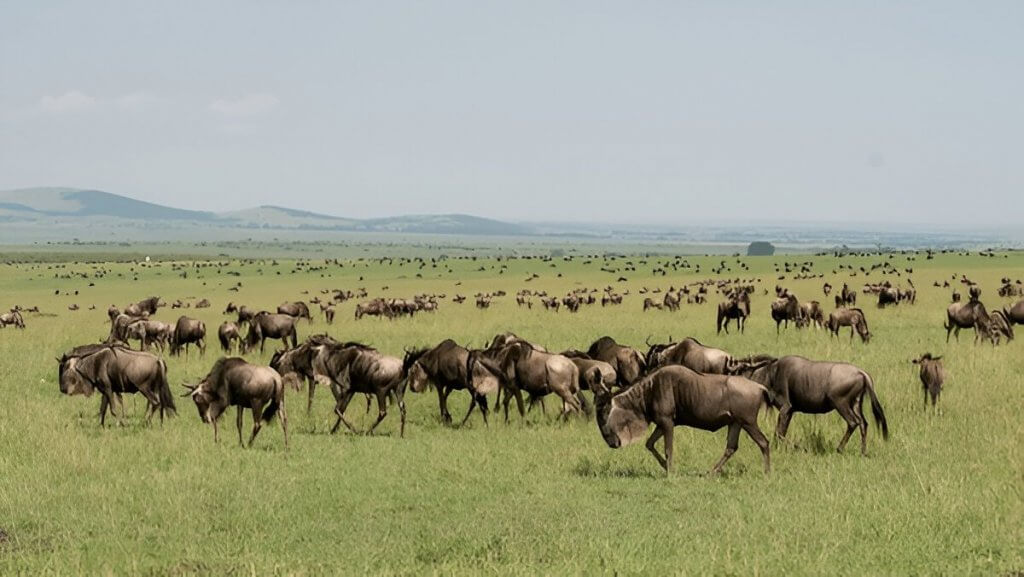The Masai Mara is one of Africa’s most iconic safari destinations, offering breathtaking landscapes and world-class wildlife viewing all year round. However, knowing when to visit can elevate your safari from great to truly unforgettable.
Choosing ‘When to Visit Masai Mara‘ can make all the difference in your safari experience. From thrilling wildlife encounters during the Great Migration to quieter seasons with lush landscapes and fewer crowds, each time of year offers something unique. In this seasonal weather guide, we’ll break down the best times to visit Masai Mara so you can plan your adventure around the climate, game viewing, and unforgettable moments.
Contents
- Your Guide to the Perfect Masai Mara Visit
- Understanding the Climate: An Overview
- When to Visit: Seasonal Breakdown
- What to Expect During Each Season
- Tips for Planning Your Masai Mara Adventure
- Conclusion: The Best Time to Experience the Masai Mara
- Experience the Magic of Hell's Gate National Park : Adventure Guide
- Top Wildlife Destinations in South India
- [Infographic] India's Animal Species That Your Kids Might Not Get To See
- The Ultimate Guide to Sri Lanka's Top 10 National Parks
- African Safari: Kenya's Top National Parks and their Unique Animals
Your Guide to the Perfect Masai Mara Visit
Are you dreaming about witnessing the majestic wildlife of the Masai Mara? Honestly, this enchanting reserve in Kenya is one of the most incredible places on Earth to connect with nature in its rawest and most beautiful form. Timing? It’s everything! In this guide, we’ll dive into the seasonal weather patterns of the Masai Mara and give you some tips on the best times to visit for an unforgettable experience.
Understanding the Climate: An Overview
The Masai Mara is famous for its diverse wildlife and stunning landscapes. But let’s be real, the weather can be a bit unpredictable. Basically, you’ve got two main seasons: the dry season and the rainy season. Knowing how these patterns work can really help you plan your visit—whether you want to catch the epic spectacle of the Great Migration or just soak in the serene beauty of the savannah.

When to Visit: Seasonal Breakdown
1. Dry Season (July to October) – Peak Safari Season & Great Migration
If you’re chasing the legendary Great Migration, the best time to visit is between July and October. During these dry months, over 1.5 million wildebeest and zebras cross from Tanzania’s Serengeti into the Masai Mara, creating one of nature’s most dramatic spectacles. With shorter grass and fewer water sources, wildlife congregates around rivers and watering holes, making animal sightings frequent and action-packed.
This is when the dry season hits its peak. From July to October, the weather is warm, and wildlife viewing is just fantastic. With shorter grasses, it’s way easier to spot animals, and all the rivers and watering holes draw in different wildlife, like elephants and lions. Seriously, it’s like nature’s version of a wildlife Super Bowl! Later half of this period i.e. are the best month to see the Great Migration.
2. Rainy Season (April to June) – Low Season with Fewer Crowds
Now, I know the rainy season might scare off some travelers, but trust me, it’s got its own charm. The landscape transforms into this lush green paradise, and you can hear the sounds of nature all around. If you’re into birdwatching, this is your time! Migratory birds flock to the area, making it a bird lover’s dream.
While some lodges close due to muddy roads and reduced accessibility, this is the quietest time to visit. If you’re looking for solitude, discounted rates, and don’t mind the occasional downpour, this can be a rewarding time to experience the Mara’s raw beauty without the crowds.
3. Transitional Periods (November to March) – Green Season & Calving Time
From November through March, the Mara transforms into a lush green paradise following the short rains. This is the ideal time for photographers and bird watchers, with clear skies, vibrant landscapes, and thousands of migratory birds arriving. In January and February, the calving season begins, offering incredible predator-prey interactions as lions, cheetahs, and hyenas stalk the newborns. It can be a pretty cool time to be there!

What to Expect During Each Season
Wildlife Viewing Opportunities
Every season brings its own unique wildlife experiences. The dry season is prime time for spotting the Big Five, while the rainy season showcases adorable young wildlife and lush surroundings. If you want to catch the Great Migration, try to plan your trip between July and October when millions of wildebeest and zebras are on the move!
Weather Conditions
Expect warm temperatures year-round, but don’t forget those evenings can get a bit chilly. The rainy season can surprise you with unexpected showers, so packing some waterproof gear is a must. A light jacket or an umbrella? You’ll thank me later!
Tips for Planning Your Masai Mara Adventure
To make the most out of your visit to the Masai Mara, keep these tips in mind:
- Book Early: If you’re planning to go during peak season, booking your accommodations early is key. Book well in advance for peak season (July–October), as lodges fill up quickly. And always check the weather and road conditions if traveling during the rainy months.
- Pack Accordingly: Bring along binoculars, a quality camera, and clothes that suit the weather.
- Stay Flexible: Wildlife viewing can be a bit unpredictable, so be ready to switch things up for the best sightings!
Conclusion: The Best Time to Experience the Masai Mara
So, when’s the best time to visit the Masai Mara? Well, it really depends on what kind of experience you’re after. The dry season gives you amazing wildlife viewing, while the rainy season showcases the reserve in full bloom. No matter when you decide to go, the Masai Mara is sure to offer unforgettable adventures and breathtaking sights.
For more info on planning your trip, don’t forget to check out our Kenya page!

